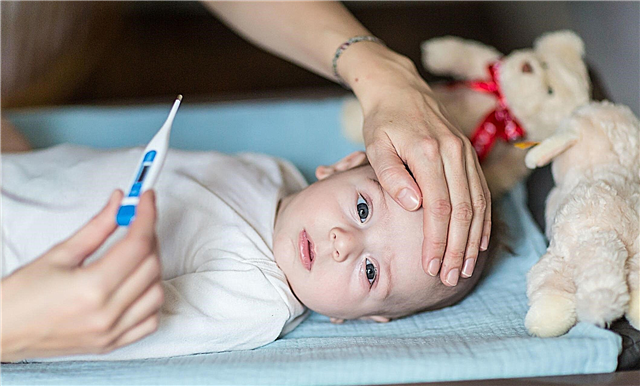Purulent-septic diseases of newborns are understood as a group of infectious diseases, which are characterized by the presence of a primary focus and circulation in the bloodstream of infections. Since the clinical picture of this kind of disease can be very ambiguous, it will be useful for every parent to learn more about them.

Newborn sepsis is a scary test for any parent
Forms of sepsis
Sepsis in a newborn can manifest itself in various forms.
Generalized
The generalized form of purulent-septic diseases of newborns means a general infectious process, which is caused by the ingress of pyogenic and pathogenic microflora from local foci directly into the bloodstream. This type of disease is accompanied by serious systemic manifestations.
The development of a generalized form of sepsis in newborns is largely due to the pathological course of the perinatal period, the difficulty of diagnosing septic conditions in newborns in the early stages and an insufficient indicator of the formation of the immune system and protective mechanisms of the infant's body.
Localized
Localized pyo-inflammatory diseases in newborns usually have a bacterial etymology. They can be caused by staphylococci, Proteus, Escherichia coli, streptococci, or mixed.
Clinical forms of purulent septic diseases of newborns can have the following:
- skin (native infection, pyoderma);
- inflammation of the subcutaneous tissue (phlegmon, paronychia);
- glandular (lymphadenitis, mastitis);
- others (purulent otitis media, osteomyelitis, conjunctivitis, etc.).
Early stage
The early stage of development of sepsis is otherwise called toxemia. It is at this stage that pathogens leave the primary focus of the disease. Symptoms of sepsis at the first stage of development may differ and depend on both the specific pathogen and the general state of the baby's immunity.
In the case of newborns, the onset of sepsis is predominantly acute and is accompanied by the following frightening symptoms:
- there are attacks of fever that have a wavy character;
- chills appear, alternating with sweating;
- the skin is covered with a rash.

No doctor can predict the course of sepsis in a newborn baby
Late stage
At a late stage in the course of a disease such as sepsis, the functioning of vital organs and systems is disrupted, and hypotension develops. If you do not provide the baby with adequate assistance in time, septic shock will ensue. With the latter, the work of the blood supply organs is disrupted, and a lethal outcome is almost inevitable.
Sepsis causes
There can be many reasons why an infant may develop sepsis. Most often we are talking about the following.
Intrauterine infection
The intrauterine purulent-inflammatory process develops even before the birth of the child. Infection occurs at the stage of formation of the organism, which means the location of the purulent focus outside the fetus. This form of infection occurs against the background of certain chronic and acute diseases in a pregnant woman. These can be purulent-inflammatory processes of various etymologies or infections.
Infections through the umbilical cord
Often the baby gets infections through the umbilical cord or small wounds. This turns out to be practically inevitable if the maternity hospital does not comply with basic sanitary standards. In the presence of the pathogen in the mother of the baby, sepsis can enter the body of the newborn and with her help.
Important! The sterility of the premises in which the child is kept in the maternity hospital is the best way to protect the baby from the purulent-inflammatory process.
Generic infection
Bacteria can enter the body of a newborn, both during pregnancy and during childbirth. Most often the problem is caused by:
- infection in the placenta or uterus;
- feverish condition of the mother during childbirth;
- premature rupture of the membranes.
Symptoms and Diagnosis
In most cases, sepsis in newborns occurs suddenly and has pronounced symptoms. Medicine knows many cases when the disease develops imperceptibly, and the symptoms are attributed to other problems of infants.

Newborn mortality from sepsis is about 30%
Most often, you can understand that a child has sepsis by the following symptoms:
- pale or jaundiced skin;
- increased or decreased body temperature;
- chills;
- fever;
- too slow weight gain;
- frequent vomiting or regurgitation;
- increased anxiety;
- excessive tearfulness;
- lack of appetite;
- the appearance of diaper rash;
- pustular eruptions.
Important! Against the background of sepsis, infants may develop pneumonia or other inflammatory disease. The most dangerous form is fulminant sepsis, which is characterized by defecation disorders, edema and a significant decrease in body temperature. This type of disease is often fatal.

In the last stage, sepsis of a newborn is very difficult to cure
Parents should take into account one important condition: if a child shows several signs of sepsis at the same time, he should be immediately shown to a doctor - in some cases, it goes on for hours, if not minutes.
Early detection of a purulent-inflammatory process is very important - this increases the chance of a positive outcome of the disease, both in the short and long term. The problem is that it is often difficult to confirm the diagnosis due to nonspecific or mild clinical presentation or atypical symptoms.
If sepsis is suspected, the first thing to do is to identify the most likely source of infection and identify a risk factor for developing a septic condition. Diagnosis is initially made based on clinical evaluation by a specialist. Then laboratory tests are performed, such as biomarkers or bacteriological blood tests.
Treatment methods
If sepsis develops with lightning speed, untimely therapy is fatal. In case of bacterial infection, antibiotic treatment should be started within an hour after the first signs appear. If this is not done, the infection will instantly spread throughout the body and cause complications.
First, it is allowed to use drugs of a wide spectrum, after receiving the results of bacterial culture, narrowly targeted antibiotics will necessarily be included in the therapy.
Important! All drugs are administered intravenously to newborns at the maximum doses acceptable for their age.
For the treatment of infants, antibiotics of groups such as macrolides, aminopenicillins, cephalosporins or aminoglycosides are suitable. In no case should fluorochilones be used because of their too high toxicity index.
In parallel with the suppression of the causative agent of sepsis in the blood, in some cases it is required to open abscesses and abscesses with their subsequent washing with antibacterial compounds and the mandatory imposition of sterile dressings. In addition, physiotherapy procedures are often prescribed: plasmapheresis, hemosorption, UHF, etc.
To prevent dehydration, the baby needs to inject solutions of glucose and sodium chloride, in case of refusal from the breast, inject expressed milk through a probe.
Note. Immunosubstitution therapy (interferons, immunoglobulins) is effective in sepsis, which allows the immune system to more effectively fight pathogens.
In the process of treatment, the basic vital signs of the baby are monitored without fail: first of all, these are the heart rate and blood pressure. An electrocardiogram is regularly taken, the state of blood and plasma is examined.
Features of prevention
Early warning of the likelihood of developing a disease is the best prevention. It should start even before carrying a child. A woman should completely cure infectious diseases, if any, eat properly and in a balanced manner and lead an exceptionally healthy lifestyle.
In the hospital, a lot depends on the medical staff. Physicians, in order to prevent nosocomial infection, must disinfect instruments, hands and follow the rules of personal hygiene. Parents should also be careful after discharge.

Any disease is easier to prevent than to cure
In case of even small deviations in the well-being of the baby, you should immediately consult a doctor. To minimize the likelihood of the dire consequences of sepsis, it is very important to identify it as early as possible. Even if anxiety about the health of the child turns out to be unfounded, this is exactly the situation when once again playing it safe will become the only right decision.



